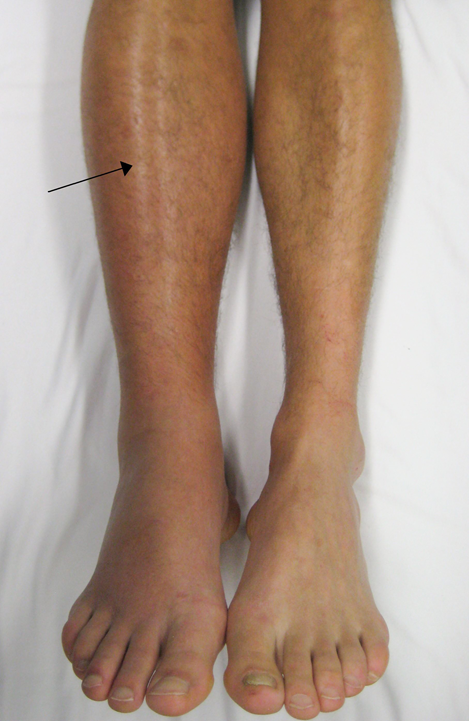How do you know if you have a blood clot after surgery?
Understanding Blood Clots After Surgery
Postoperative care is an essential aspect of your recovery journey after undergoing surgery. Among the complications that can arise during this period, Deep Vein Thrombosis (DVT), commonly known as a blood clot, is a critical condition that requires immediate attention.
Despite the concerning statistics that suggest a high incidence of asymptomatic DVT ranging from 30 to 80% and symptomatic DVT occurring in 0.5% to 4% of patients, awareness and early detection can significantly mitigate risks. If you or a loved one is recovering from surgery, it’s important to recognize, understand, and manage blood clots after surgery.

What is Deep Vein Thrombosis (DVT)?
Deep Vein Thrombosis occurs when a blood clot forms in a deep vein, usually in the legs. This condition is particularly concerning because it has the potential to lead to serious complications, such as a pulmonary embolism (PE) – a life-threatening condition where a clot travels to the lungs, blocking blood flow.
Risk Factors for DVT
Several factors contribute to the likelihood of developing a DVT after surgery. These include the type of surgery (with higher risks associated with orthopedic, abdominal, and pelvic surgeries), prolonged immobility, a personal or family history of blood clots, certain medical conditions, obesity, and age. Understanding these risk factors is crucial in recognizing your personal risk and taking steps to mitigate it.
Signs and Symptoms of DVT
Awareness of the signs and symptoms of a blood clot is essential for early detection. Symptoms of DVT can vary but often include:
- Leg pain or tenderness that is often described as a cramp or soreness.
- Swelling in the affected leg, including the calf or thigh.
- Warmth over the area of the clot.
- Redness or discoloration of the skin on the leg.
- Visible veins that are more prominent than usual.
Recognizing Pulmonary Embolism (PE)
A PE can occur if a part of the blood clot breaks off and travels to the lungs, which can be fatal. Symptoms of PE include:
- Sudden chest pain that may worsen with deep breathing.
- Shortness of breath or rapid breathing.
- Coughing up blood.
- Dizziness or light-headedness.
- Diagnosis and Treatment
If you experience any symptoms suggestive of a DVT or PE, it's imperative to seek medical attention immediately. Early diagnosis and treatment are crucial in preventing complications.
Am I At Risk For Developing A Blood Clot After Surgery?
After surgery, patients are at increased risk of developing blood clots, particularly Deep Vein Thrombosis (DVT). Several factors contribute to this heightened risk, varying from individual health status to the nature of the surgical procedure. Understanding these risk factors is crucial for implementing preventive measures and ensuring a safe recovery. Here are key risk factors for developing a blood clot post-surgery:
Type of Surgery
Certain surgeries, especially those involving the pelvis, abdomen, hip, and knee replacement, are associated with a higher risk of blood clots. Orthopedic surgeries, in particular, carry a significant risk due to immobilization and the body's inflammatory response to surgical trauma.
Prolonged Immobility
Extended periods of bed rest or inactivity slow down the blood flow in the deep veins, increasing the risk of clot formation. This is a common issue post-surgery as patients recover and may be less mobile.
Personal or Family History of Blood Clots
Individuals with a personal or family history of DVT or pulmonary embolism are at a higher risk of developing blood clots.
Age
The risk of developing blood clots increases with age, particularly in individuals over 60.
Obesity
Excess weight increases the pressure in the veins in your pelvis and legs, which can affect blood flow and lead to clot formation.
Smoking
Smoking affects blood circulation and can increase the risk of clotting, especially in the postoperative period.
Cancer and Cancer Treatment
Some types of cancer and cancer treatments can increase the risk of blood clots. Chemotherapy, in particular, is known to elevate this risk.
Hormonal Therapy
The use of hormone replacement therapy or birth control pills that contain estrogen can increase the risk of blood clots.
Other Medical Conditions
Conditions such as heart disease, lung disease, inflammatory bowel disease, and certain genetic clotting disorders can increase the risk of DVT.
Length of Surgery
Longer surgeries increase the risk of developing blood clots, as prolonged immobility can lead to slowed blood flow.
Previous Clotting History
Individuals with blood clots are at a higher risk of developing new clots than those without a previous history.
Awareness and management of these risk factors through measures such as early mobilization, use of compression garments, and prophylactic anticoagulation, where appropriate, are key to preventing post-surgical blood clots. It's important for patients to discuss their specific risk factors with their healthcare provider before and after surgery to ensure a tailored approach to clot prevention.
How Will My Doctor Diagnose a Blood Clot After Surgery?
Diagnosing a blood clot, or deep vein thrombosis (DVT), involves several methods primarily focused on imaging tests:
Ultrasound: This is the primary method for detecting DVT, specifically targeting the veins in the lower extremities to identify any clots.
CT Scan or VQ Scan: These imaging tests are crucial for detecting a pulmonary embolism (PE) in the lungs, another potential complication related to blood clots.
Following diagnosis, treatment often includes anticoagulant medications, known as blood thinners, to prevent the clot from growing and to stop new clots from forming. More invasive treatments may be necessary to address the clot directly in certain cases.
How Can I Prevent Blood Clots After Surgery?
Prevention of DVT is key to a successful recovery post-surgery. Here are several steps you can take to minimize your risks:
- Engage in movement as soon as possible after your surgery to improve blood circulation.
- Use prescribed compression stockings to pressure your legs, aiding blood flow.
- Follow your doctor's instructions regarding blood thinners or other medications to reduce the risk of clot formation.
- Ensure you are drinking plenty of fluids to prevent your blood from becoming too thick, which can increase the risk of clotting.
Following your doctor's instructions after surgery is paramount for several reasons crucial to healing and overall recovery. Adhering to post-operative guidelines provided by healthcare professionals ensures that the patient recovers as quickly and safely as possible, minimizing the risk of complications and improving the long-term outcome of the surgery.
Be sure to comply with post-surgery instructions, which aid in wound healing. Surgical interventions often leave wounds that require careful management to heal properly. Instructions may include how to care for the surgical site, signs of infection to watch for, and when it is safe to resume showering or bathing. Ignoring these guidelines can lead to wound infections, delayed healing, or even reopening the wound, which might necessitate further medical intervention.
Doctors often provide recommendations on physical activities and limitations post-surgery. These instructions are designed to prevent strain on the healing area, ensuring that the patient does not engage in activities that could jeopardize the surgical outcome. For example, lifting heavy objects after abdominal surgery can lead to hernias or damage to the surgical repair.
Follow all your medical team’s instructions for a smooth, healthy recovery, including sticking to your medication schedule, changing bandages promptly, and getting appropriate movement. Keep all your follow-up appointments, and reach out if you have questions.
When Should I See a Doctor About Blood Clots After Surgery?
Do not delay seeking medical attention if you suspect a blood clot. Symptoms should not be ignored in the hopes that they will resolve independently. Promptly contact your healthcare provider or visit the nearest emergency room if you experience signs of a blood clot. Early intervention is crucial for a successful recovery, as DVT can be life-threatening.
Your healthcare team is there to support you throughout this journey, so never hesitate to reach out with any concerns regarding your postoperative health. Stay informed, remain vigilant, and prioritize your health to ensure a smooth and safe recovery.
Recovering from surgery is a crucial time that demands vigilance and care, especially when it comes to the risk of Deep Vein Thrombosis (DVT). At Center for Vascular Medicine, we understand the concerns and complexities surrounding postoperative blood clots. That's why we're here to guide you through recognizing the signs, understanding the risks, and taking proactive steps toward prevention and treatment.
Don't let the fear of DVT overshadow your recovery. Our team is ready to provide expert care and support if you're seeking to understand your risk factors, need help identifying symptoms, or require immediate medical attention for suspected blood clots.
Schedule a consultation online now or call (301) 486-4690 and speak to one of our professional, welcoming patient representatives. We serve patients from Annapolis, MD, Columbia, MD, Easton, MD, Glen Burnie, MD, Greenbelt, MD, Prince Frederick, MD, Silver Spring, MD, Waldorf, MD, Fairfax, VA, Fredericksburg, VA, New Brunswick, NJ, and Union, NJ.

